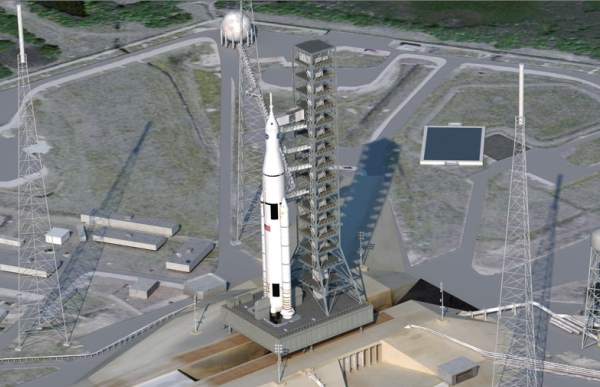NASA says its new Space Launch System (SLS) – which has been tapped to transport astronauts to Mars – will be larger and more powerful than even the massive Saturn V moon rocket.
The rocket is slated to be built around a core stage the same diameter as a space shuttle external tank – and powered by three space shuttle main engines, with later missions using five SSMEs.

Five-segment solid rocket boosters will be mounted to the side of the tank for additional power, although liquid-fueled boosters could be incorporated on subsequent flights.
“We can tell you we have the capability with this for some pretty exciting missions. I think it’s fair to call this the most powerful rocket ever built,” said Bill Gerstenmaier, NASA associate administrator for Human Exploration and Operations.
“[Nevertheless], we have very little engine development to do… [SLS is] being designed and built in a new, modern way – [so] we’ll probably build the tank vertically instead of horizontally.”
According to Gerstenmaier, the design is modular so it can be tailored to different mission needs without requiring one-of-a-kind, and more expensive, components.
NASA envisions two basic sizes for the SLS. One would lift 70 metric tons into space, about three times more than a shuttle. A larger version, complete with a 10-meter payload fairing or nose cone, would lift 130 metric tons into space, a larger payload than any other rocket.
“We think this rocket, when we put it out there, will be very attractive to other users,” Gerstenmaier emphasized, noting the rocket could be used to launch huge satellites or other cargo without astronauts on board.
Compared to the Saturn V rocket that carried astronauts to the moon from 1968 – 1972, the SLS would produce 10% more thrust when configured to launch 70 metric tons into space. The larger version will boast approximately 20% more thrust than the Saturn – and is expected to be 40 feet taller than a Saturn V, coming in at about 400 feet.
NASA’s current schedule calls for a test flight in 2017 with the upper stage of a Delta IV rocket, then a flight with astronauts on board in 2021 with the J-2X-powered upper stage. The rocket and spacecraft could also conduct a mission to an asteroid by 2025.
“Yes, it takes a long time, but when we’re finished we’ll be capable of going to space like no other nation,” Gerstenmaier claimed.






